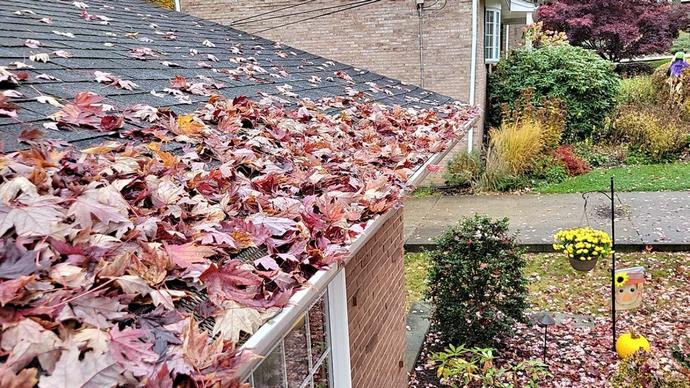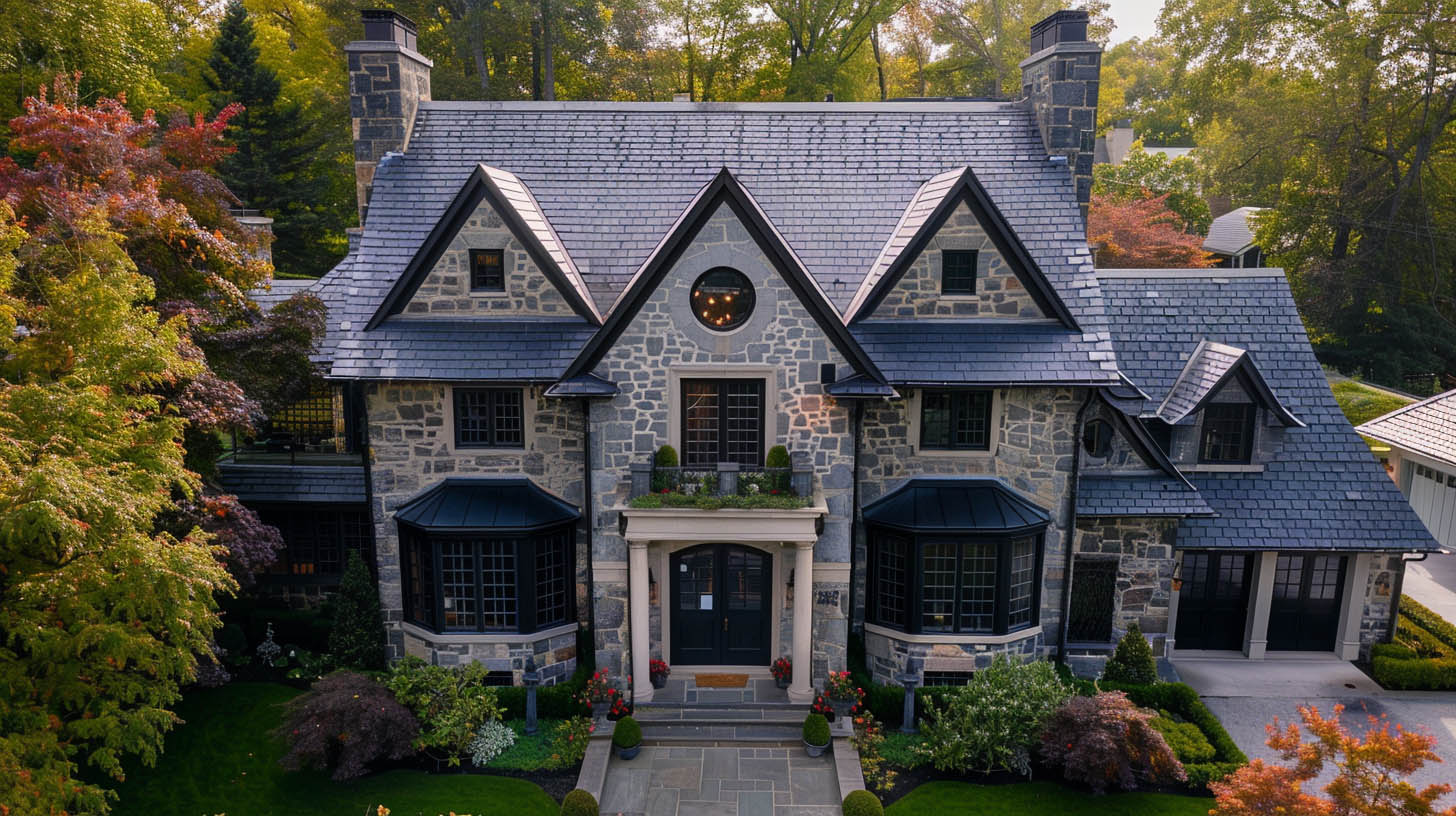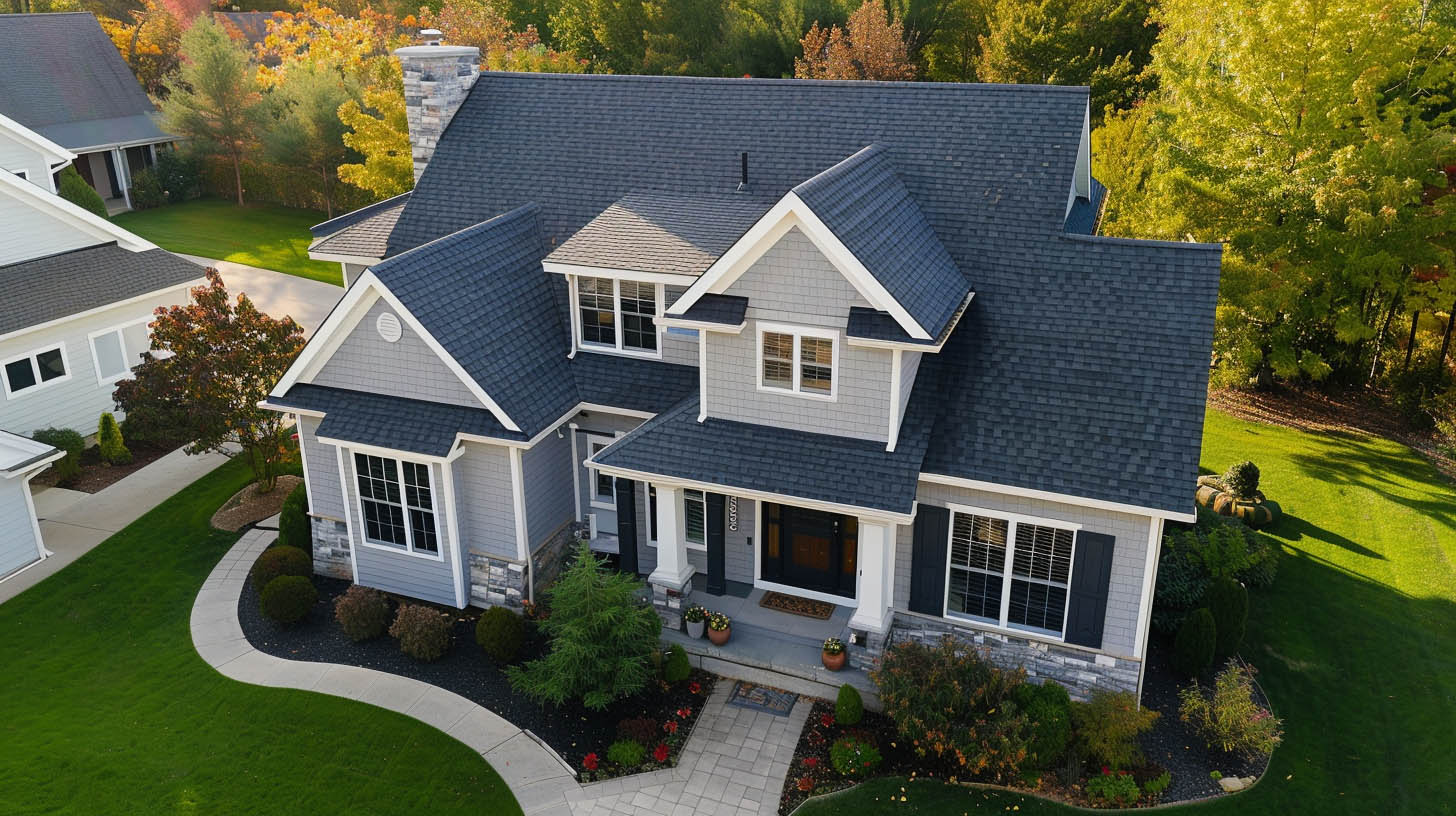
While roof inspections can be performed year-round, fall stands out as an ideal season for several reasons. Our customers are asking why fall is the ideal season for roof inspections. If you think about it, fall represents a significant shift in weather patterns. The warm summer months are winding down, and colder temperatures are on the horizon. This transition can have a notable impact on your roof’s condition, believe it or not.
Roof Inspections in Pittsburgh: Why Fall is the Best Time to Get Them

Fall typically brings mild and stable weather conditions. Unlike the scorching heat of summer or the unpredictability of spring showers, fall offers consistent temperatures and reduced humidity. This makes it an ideal time for roofing professionals to assess your roof without the discomfort of extreme weather.
Let’s take a look at how us roofing experts address summer wear and tear to prepare for the winter season:
Addressing Summer Wear and Tear
Summer can be particularly harsh on roofs. Intense heat and UV rays can cause shingles to expand and contract, leading to potential damage. Additionally, summer storms with heavy rain, hail, or high winds can take a toll on your roof. A fall inspection allows you to address any wear and tear from the summer months promptly.
Preparing for Winter
Perhaps the most compelling reason for a fall roof inspection is to prepare for the impending winter season. Winter weather, with its snow, ice, and freezing temperatures, can be incredibly taxing on your roof. Identifying and addressing issues in the fall ensures your roof is ready to handle whatever winter throws its way.
What to Expect During
a Fall Roof Inspection
Now that we’ve established why fall is the best time for a roof inspection let’s delve into what you should expect during this process.
1. Interior Inspection
A thorough roof inspection starts inside your home. Inspectors will look for signs of roof problems, such as the following:
- Leaks: Water stains are typically indicative of leaks or water infiltration from damaged roofing. They can result from compromised roofing materials, such as cracked or missing shingles, damaged flashing, or improperly sealed roof penetrations.
- Hidden Damage: While the stains themselves are visible, they often point to hidden damage that might not be immediately apparent. Water can travel along roof structures and cause damage to the underlying roof decking, insulation, and even structural components.
- Mold and Mildew: Prolonged exposure to moisture can create the ideal conditions for mold and mildew growth. These contaminants not only affect indoor air quality but can also compromise the structural integrity of your home.
- Health Concerns: Beyond structural issues, water stains can pose health risks to occupants. They can exacerbate allergies and respiratory conditions, making it crucial to address leaks promptly.
2. Attic Examination
During a comprehensive roof inspection, a critical yet often overlooked area that inspectors examine is your attic. This attic assessment serves as a vital component of the inspection process. Attic assessment matters for several reasons:
- Early Detection: Issues within your attic, such as water infiltration, damaged insulation, or inadequate ventilation, can often be early indicators of roofing problems. Detecting and addressing these issues promptly can prevent more extensive damage and costly repairs down the line.
- Energy Efficiency: An attic assessment can identify areas where insulation may need improvement or where ventilation can be enhanced. This can lead to improved energy efficiency in your home, reducing heating and cooling costs.
- Longevity: Proper attic maintenance and ventilation can extend the lifespan of your roofing materials. By keeping your attic environment in good condition, you help ensure that your roof remains resilient against the elements.
3. Exterior Inspection
The exterior inspection involves a detailed examination of your roof’s surface. Inspectors will look for damaged or missing shingles, cracked flashing, and any debris or moss growth that needs removal. They’ll also check for proper sealing around vents, chimneys, and other roof penetrations to help with:
- Preventive Maintenance: Identifying and addressing issues during the exterior inspection helps prevent more extensive damage to your roof and potential interior water damage.
- Prolonged Roof Lifespan: Regular exterior inspections and maintenance contribute to your roof’s longevity, saving you money on premature replacements.
- Energy Efficiency: A well-maintained roof with intact shingles and proper sealing enhances your home’s energy efficiency by keeping your heating and cooling systems from working harder.
4. Gutter and Downspout Assessment
Inspectors will examine your gutters and downspouts to ensure they are clear of debris and properly channeling water away from your home. Clogged or damaged gutters can lead to water damage and ice dams in the winter.
- Extended Roof Lifespan: Well-maintained gutters contribute to your roof’s longevity by preventing water-related damage.
5. Detailed Documentation
A reputable roofing professional will document their findings, including photographs, to provide you with a comprehensive report. This report will outline any issues discovered and recommended solutions.
Detailed documentation is crucial during your fall roof inspection. Reputable roofing professionals prioritize transparency in their work. They understand that you, as a homeowner, deserve a clear and detailed account of your roof’s health. By documenting their findings, including photographs, they provide you with tangible evidence of any issues discovered during the inspection. This transparency ensures that you’re fully informed about the condition of your roof.
Why Trust Professionals for Roof Inspections?
While some homeowners may attempt to inspect their roofs themselves, it’s highly advisable to enlist the expertise of roofing professionals. Here’s why:
1. Safety
Roof inspections can be hazardous. Roofing professionals have the training and equipment to navigate your roof safely, reducing the risk of accidents or injuries.
2. Expertise
Roofing professionals bring years of experience and specialized knowledge to the table. They’ve encountered a wide range of roofing issues and are well-versed in identifying even subtle signs of damage or wear. Their trained eye allows them to spot potential problems that an untrained homeowner might miss.
3. Comprehensive Reports
Professional roofing inspectors provide detailed reports that outline the inspection’s findings and recommendations. These reports are valuable for understanding the current condition of your roof and planning for any necessary repairs or replacements.
Schedule Your Roof Inspection Today!

Fall is undoubtedly the ideal season for roof inspections. The stable weather conditions, the opportunity to address summer wear and tear, and the preparation for winter make it the perfect time to ensure your roof is in top shape. However, it’s essential to entrust this critical task to roofing professionals who can thoroughly assess your roof’s condition and provide expert guidance on any necessary repairs or maintenance.
By investing in a fall roof inspection, you’re not only safeguarding your home but also extending the lifespan of your roof and avoiding potentially costly issues down the road. Don’t wait until winter arrives; schedule your fall roof inspection today to ensure peace of mind throughout the colder months.
Contact MY PITTSBURGH ROOFING to schedule a free consultation! 412-218-7082.


